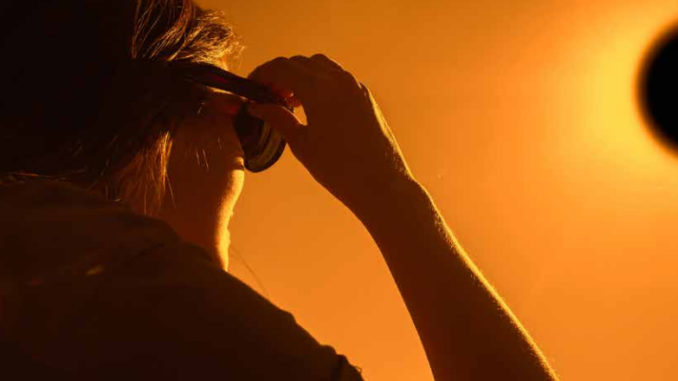
While solar eclipses can be some of the most spectacular shows in nature, they also can be very dangerous if viewers don’t follow proper precautions.
Here are some things to know.
EYE DAMAGE CAN BE PERMANENT
Staring at the sun any time can cause permanent, irreversible eye damage, so it’s important to take eye safety seriously. The human retina is very sensitive to light and also quite delicate. Too much sunlight hitting the retina can cause damage, resulting in solar retinopathy. In extreme cases it can cause blindness, but more often it results in other serious vision problems such as yellow or dark spots or blurred eyesight. Solar eclipses are a particular risk because viewers are tempted to stare at the sun for long periods of time. Even a small sliver of sunlight showing is enough to cause permanent eye damage. To save your vision, make sure you use proper eye protection — not ordinary sunglasses.
SPECIAL PROTECTION NEEDED
To watch the eclipse safely, you’ll need to use appropriate eye glasses to filter out the sunlight. According to NASA, viewers should only use devices to view the sun that are certified under the international ISO 12312-2 standard. Unfortunately, NASA also said many unscrupulous sellers have flooded the market with glasses that have never been tested or certified, despite markings that say they have been. According to the American Astronomical Society (AAS), “unscrupulous vendors can grab the ISO logo off the internet and put it on their products and packaging even if their eclipse glasses or viewers haven’t been properly tested. This means that just seeing the ISO logo or a label claiming ISO 12312-2 compliance isn’t good enough. You need to know that the product comes from a reputable manufacturer or one of their authorized dealers.” The AAS maintains a list of manufacturers that sell legitimately certified eye protection. The current list is available online at http://eclipse. aas.org/resources/solar-filters. It’s a good idea to order eclipse glasses early because high demand may cause a backlog or shortage of these safety devices.
STAY SAFE NASA also offers these safety tips:
• Homemade filters or ordinary sunglasses, even very dark ones, are not safe for looking at the sun.
• Always inspect your solar filter before use; if scratched or damaged, discard it. Read and follow any instructions printed on or packaged with the filter. Always supervise children using solar filters.
• Stand still and cover your eyes with your eclipse glasses or solar viewer before looking up at the bright sun. After glancing at the sun, turn away and remove your filter — do not remove it while looking at the sun.
• Do not look at the uneclipsed or partially eclipsed sun through an unfiltered camera, telescope, binoculars or other optical device. Similarly, do not look at the sun through a camera, a telescope, binoculars, or any other optical device while using your eclipse glasses or hand-held solar viewer — the concentrated solar rays will damage the filter and enter your eye(s), causing serious injury.
• Seek expert advice from an astronomer before using a solar filter with a camera, a telescope, binoculars, or any other optical device.
• If you are within the path of totality, remove your solar filter only when the moon completely covers the sun’s bright face and it suddenly gets quite dark. Experience totality, then, as soon as the bright sun begins to reappear, replace your solar viewer to glance at the remaining partial phases.